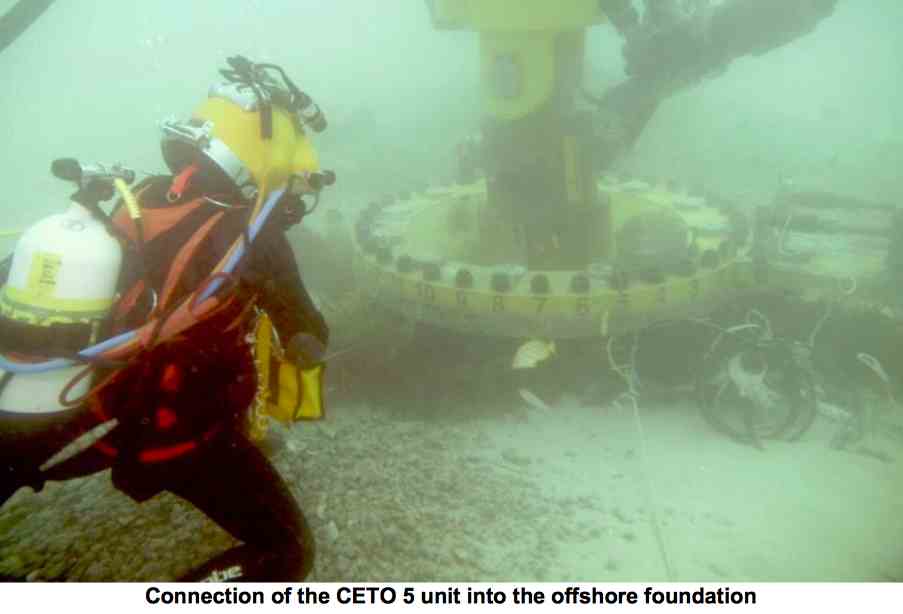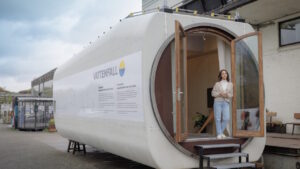Australia’s Carnegie Wave Energy says it has successfully installed the first of its CETO wave energy units off Garden Island, near Perth, and the unit is now switched on and operating in line with expectations.
The 240kW CETO unit is the first of three units to be installed at what will be the world’s first multi-machine wave energy installation. It is a key test run for the full size CETO 6 units – which will be one megawatt each – which is currently under design and will be deployed in Australia – and elsewhere – in coming years.
Carnegie said in a statement on Tuesday that the first unit had been installed during calm conditions – and at its first attempt – and had been operating for one week. Wave heights had reached 3.5m. The unit is unique in that it sits entirely below the surface, increasing its ability to survive large storms.
Ivor Frischknecht, the CEO of the Australian Renewable Energy Agency (ARENA), which has helped fund the project, said the achievement at the Perth Wave Energy Project was of great significance for wave energy in Australia, which some have said could potentially deliver a large amount of Australia’s energy needs.
“This project demonstrates that wave energy has a real future as part of Australia’s energy mix,” Frischknecht said in a statement.
“It is also evidence that developing and commercialising new technologies takes considerable time, resources and financing. The CETO technology has been progressively scaled up over the past decade and has made great strides towards offering a competitive renewable energy solution.”
Carnegie’s achievements contrast sharply with the fortunes of other wave energy developers. Palermis last week said it could not attract any further funding, and has since entered administration. OPT, which had won funding for a 23MW facility off Victoria, has had that grant removed after failing to raise any funds.
Carnegie managing director Dr Michael Ottaviano said it marks the completion of a critical phase in Carnegie’s evolution and culmination of 3 years of design, financing, development and construction.
“It is also now the start of a new phase as we learn as much as we can about CETO 5 via the data collection and analysis that has already commenced,” he said in a statement.
“This initial CETO 5 unit is currently delivering significant amounts of real time data in regards to hydrodynamic movement, pressures, flows, loads, displacements and the like. All of which is critical to validating Carnegie’s proprietary computational models which can then be used with confidence in finalising the design of Carnegie’s 1MW CETO 6 system in 2015.”
The second CETO 5 unit is currently being finalised ready for deployment which will likely take place in December, subject to suitable weather conditions. Once confidence is established with its operation, installation of the third CETO 5 unit would follow.
The units have yet to be connected to the Western Power grid, but this will occur once Carnegie has full confidence in the power quality and system control being achieved. Integration of the wave energy into the desalination plant will occur after electricity generation and grid connection has been achieved.
The Perth Wave Energy Project has been under construction for approximately 12 months beginning with the installation of the CETO 5 unit offshore foundations last summer. The construction was proceeded by some 2 years of design, approvals, offtake, financing and procurement activity. More than $30m has been invested so far.












